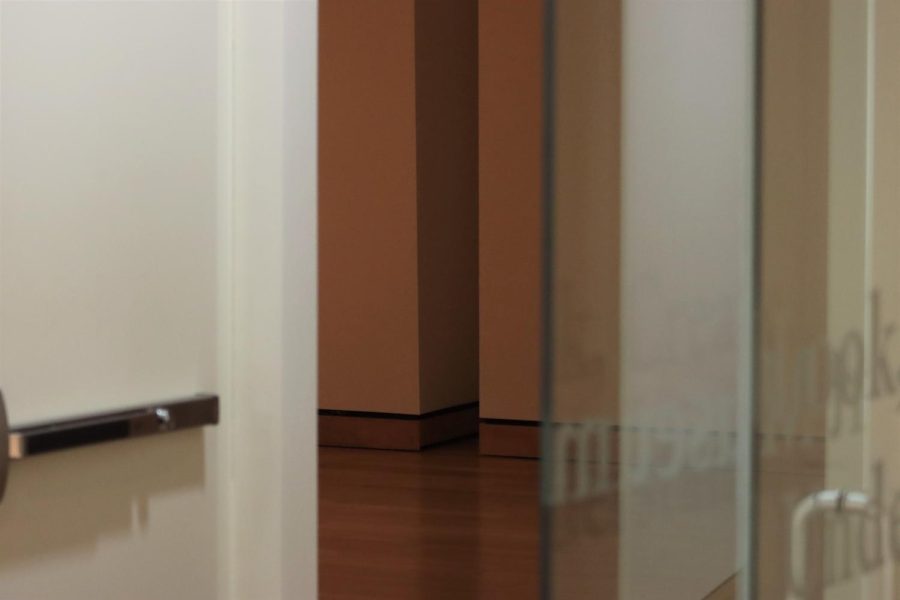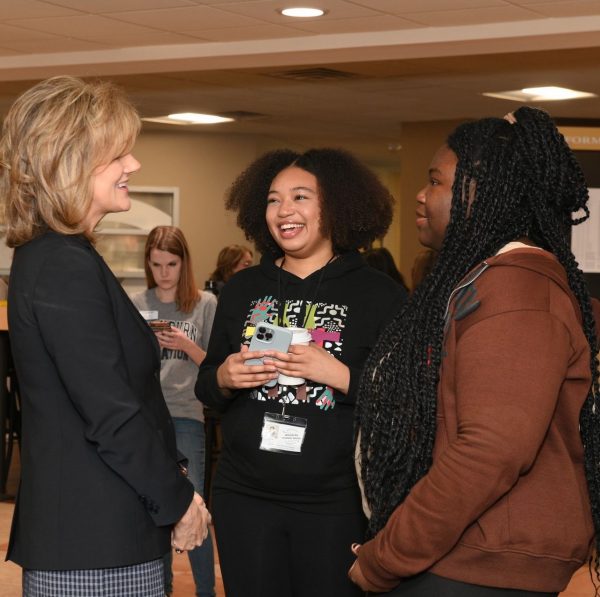Mulvane closing floor for renovations
The walls of the upstairs gallery are bare. It was closed to the public earlier this year.
The second floor gallery space of the Mulvane Art Museum is expected to be closed for a maintenance renovation until 2024.
Currently in the designing phase, the goal is to have the project wrapped up for the museum’s centenary celebrations in 2024. Connie Gibbons, director of the museum, said the renovation will require a lot of artwork to get moved.
“Part of this work includes correcting any issues in the storage areas, too,” Gibbons said. “The same system that provides heating and cooling for the museum is also used for the storage rooms. We’re trying to mitigate any water issues.”
Eric Just, director of Facility Services, explained how the current water systems inside the building are supposed to work.
“We take hot water from the boilers into the space to different variable air volume boxes,” Just said. “The hot water feeds those boxes and it heats the air to heat the space.”
Because the nearly 100-year-old museum stores sensitive artwork, monitoring the humidity within the building is of utmost concern.
“In the summer, you have humid air outside and in the winter, you’ve got dry air outside. The building was built prior to the use of vapor barriers, so the building kind of acts as a sponge,” Just said. “We have steam that is fed through similar lines which spray steam into the air. So we’ve got a lot of water around the area.”
The problem with any mechanical system is that at some point it’s going to fail. Over the years, several small things have happened that needed fixing, like pipe coupling leaks and humidity control sensors malfunctioning.
“Water has damaged some ceiling and flooring,” Just said. “It has not damaged any artwork, but it’s gotten close.”
During the spring semester of 2022, the decision was made to close the second floor and pay for a more permanent solution rather than repeatedly repairing.
Edited by Glorianna Noland, Justin Shepard
Your donation will support the student journalists of Washburn University. Your contribution will allow us to purchase equipment and cover our annual website hosting costs.









